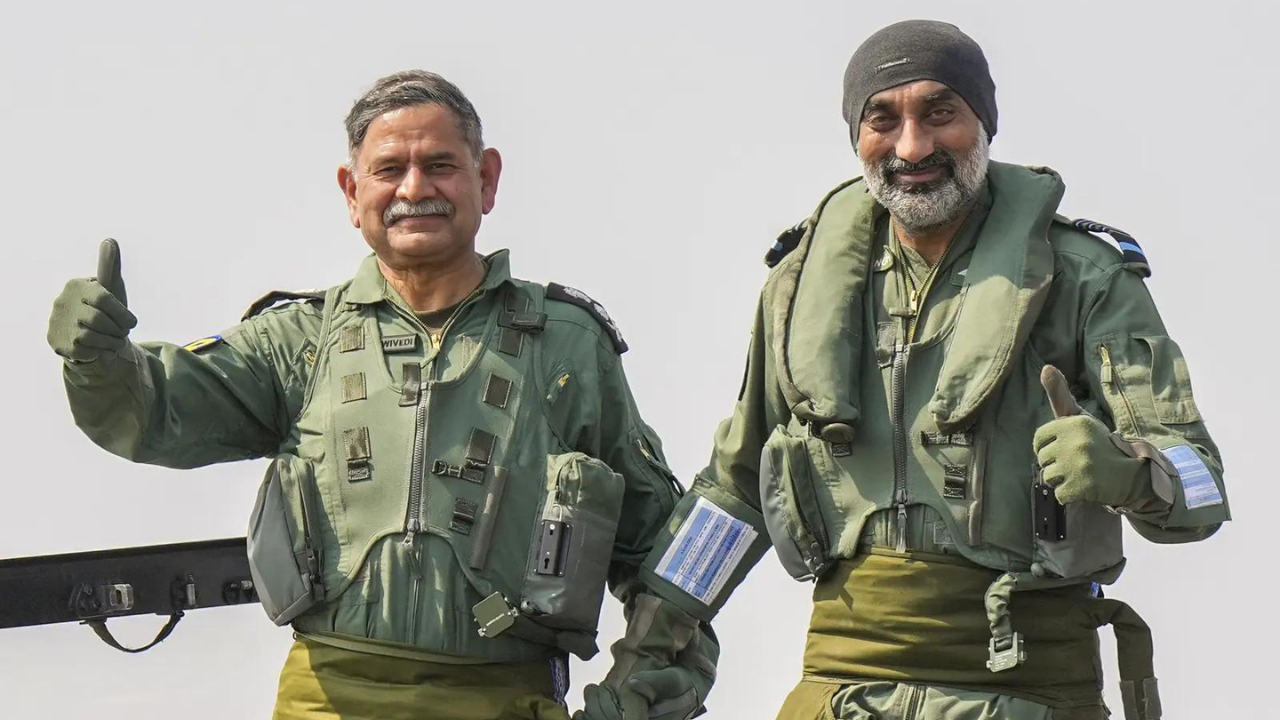 |
|
The unprecedented joint sortie undertaken by the Chiefs of the Indian Army and Air Force in the indigenously built LCA Tejas fighter jet signifies a significant development in inter-service cooperation and showcases the growing synergy between the two crucial branches of the Indian Armed Forces. The event, captured in photographs released to the press, portrays a spirit of camaraderie and mutual respect rarely seen at such a high level of command. This public display of unity carries considerable weight, underscoring the increasing emphasis on joint operational capabilities and integrated defense strategies within the Indian military framework. The seemingly simple act of a shared flight in a sophisticated fighter aircraft transcends its literal meaning, symbolizing a deeper commitment to collaborative training, resource sharing, and ultimately, a more effective national defense strategy.
The Army Chief's comments following the sortie highlight the significance of this event. His expression of gratitude towards the IAF and admiration for the challenging nature of piloting a fighter jet underscores the level of respect and understanding fostered between the two services. His statement regarding the “synergistic approach” needed for effective national defense is crucial, indicating a recognition that the modern security landscape demands closer integration and interoperability between different military branches. The statement also clearly hints at the event serving as a successful prelude to the upcoming Aero India 2025 show, suggesting this joint flight serves as a powerful symbol of national defense capabilities and readiness.
The Army Chief's playful comment about the Air Chief Marshal becoming his 'guru' adds a lighter note to the occasion, while also subtly emphasizing the learning and knowledge exchange that occurs through such interactions. This highlights the importance of cross-training and the benefits of personnel from different services learning from each other's expertise. The collaborative spirit demonstrated transcends mere professional courtesy and suggests a deeper, more enduring relationship built on mutual trust and respect, which is essential for the seamless functioning of a unified national defense system. In a broader context, this event is a potent symbol of national pride, showcasing India's advancements in indigenous defense technology and the strengthening bonds of its armed forces.
The choice of the LCA Tejas as the aircraft for this joint sortie is not without symbolic significance. The Tejas, a product of indigenous development and a testament to India's growing self-reliance in defense manufacturing, represents the nation's technological prowess. Including the Army Chief in a flight signifies a commitment to showcasing the capabilities of the indigenous aircraft to a wider audience, reinforcing its importance in the nation's security strategy. The use of the Tejas also underscores the increasing focus on joint training programs and the utilization of cutting-edge technology to enhance interoperability and combat effectiveness.
The photo opportunity itself, widely disseminated by the press, serves as a strategic communication tool to project a strong image of national unity and military prowess. It is a clear demonstration to both domestic and international audiences of the Indian military's capabilities and the strong collaborative relationship between its various branches. This carefully curated image promotes confidence in the nation's security apparatus and reinforces the perception of a powerful and unified defense force. This strategic use of public relations enhances national morale and projects an image of strength on the world stage.
Looking forward, this successful joint sortie could potentially pave the way for more collaborative initiatives between the Indian Army and Air Force. This could include expanded joint training exercises, shared resource allocation, and the development of integrated operational doctrines. Such collaboration will enhance operational efficiency, streamline resource management, and improve the overall effectiveness of India’s defense capabilities. The success of this event sets a positive precedent for future collaborations, promoting a culture of teamwork and mutual understanding within the Indian military.
The joint sortie underscores a broader trend within modern militaries towards increased inter-service cooperation. The complex nature of modern warfare necessitates a seamless integration of different military branches to achieve optimal effectiveness. The Indian Army and Air Force collaboration showcases the adoption of this increasingly prevalent approach, positioning India's defense structure for greater efficiency and effectiveness in responding to a wide range of security challenges. This move represents a forward-thinking approach to military strategy, acknowledging the crucial interdependence of various branches for national security.
In conclusion, the seemingly simple event of a joint flight in the LCA Tejas by the Indian Army and Air Force chiefs holds significant symbolic value, representing a crucial step forward in inter-service cooperation. It reflects a commitment to enhancing operational effectiveness, leveraging indigenous technology, and projecting a unified image of national strength. The positive implications of this collaboration extend beyond immediate military benefits, impacting national morale, promoting a sense of national unity and demonstrating India's growing military capabilities to the world. This event serves as a powerful symbol of progress and a strong foundation for future collaborative endeavors within the Indian Armed Forces.
Source: Airborne bonhomie: IAF, Army chiefs take sortie together in LCA Tejas fighter jet; see pics
